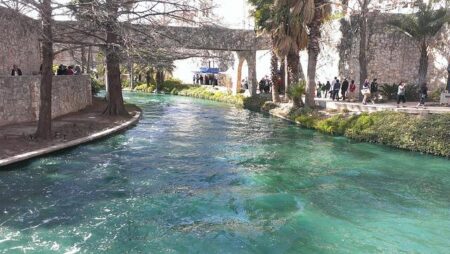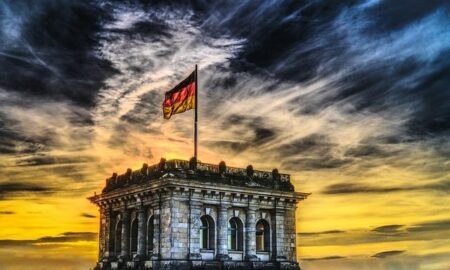San Antonio in 1999: A City Balancing Heritage and Growth at the Millennium
Transforming Urban Fabric: San Antonio’s Landscape at the Millennium
As the 20th century drew to a close, San Antonio was a city in flux, harmonizing its deep-rooted history with the momentum of modernization. The skyline began to showcase a dynamic mix of preserved historic edifices alongside contemporary architecture, signaling the city’s expanding role as a cultural and economic powerhouse within Texas. Iconic structures like the Emily Morgan Hotel and Tower Life Building stood as proud testaments to the city’s past, while new developments hinted at a future of growth.
Residential expansion was notably shifting outward, with suburban neighborhoods flourishing as families sought larger homes while maintaining proximity to downtown’s amenities. City planners prioritized revitalizing the urban core, enhancing infrastructure, and integrating the famed River Walk more cohesively with commercial and cultural venues. Early public transit initiatives aimed to alleviate traffic congestion, reflecting a budding commitment to sustainable urban mobility.
| Urban Indicator | 1999 Status | Emerging Trend |
|---|---|---|
| Downtown Occupancy | 85% | Rising with new enterprises |
| Suburban Population Growth | 4.5% annually | Rapid outward expansion |
| Annual River Walk Visitors | 5+ million | Consistent tourism increase |
| Public Transit Ridership | Approximately 10% | Plans underway for expansion |
Driving Forces Behind San Antonio’s Economy in 1999
San Antonio’s economic landscape at the close of the 1990s was marked by a diversified portfolio of industries that fostered resilience and steady growth. The military sector, anchored by key installations such as Lackland and Randolph Air Force Bases, remained a cornerstone of employment and economic stability. Meanwhile, the healthcare industry experienced significant expansion, largely propelled by the South Texas Medical Center’s emergence as a leading regional hub for medical care and education.
Tourism thrived, buoyed by the city’s rich cultural heritage and attractions like the Alamo and the River Walk, which drew millions annually. Financial services and budding technology firms also began to carve out a presence, setting the stage for future innovation and economic diversification.
| Sector | Approximate Growth Contribution | Key Institutions |
|---|---|---|
| Military & Defense | 30% | Lackland AFB, Randolph AFB |
| Healthcare | 25% | South Texas Medical Center |
| Tourism & Hospitality | 20% | Alamo, River Walk Hotels |
| Financial Services | 15% | Local Banks, Credit Unions |
| Technology | 10% | Emerging Tech Startups |
San Antonio’s Cultural Pillars and Community Spaces in the Late 1990s
During the late 1990s, San Antonio’s cultural identity was vividly expressed through its landmark sites, which served as vital centers for community life and historical remembrance. The River Walk thrived as a lively corridor of dining, entertainment, and artisan commerce, reflecting the city’s unique fusion of Texan and Mexican cultural influences. The Alamo remained a powerful emblem of Texas pride and resilience, attracting visitors eager to connect with the state’s storied past.
Community life often revolved around venues like HemisFair Park, which hosted festivals and concerts that brought residents together in celebration of the city’s diverse heritage. The San Antonio Missions National Historical Park gained prominence as an educational and spiritual destination, preserving colonial-era missions and highlighting the city’s indigenous and colonial narratives. These landmarks were more than tourist attractions; they were the heartbeats of neighborhoods, nurturing a strong sense of identity and belonging.
- River Walk: Hub for dining and cultural events
- The Alamo: Historic battlefield and symbol of independence
- HemisFair Park: Venue for festivals and live performances
- San Antonio Missions: Center for education and heritage tours
| Landmark | Historical Importance | Role in Community |
|---|---|---|
| The Alamo | Iconic battle site | Memorial and tourism focal point |
| River Walk | Urban waterway and promenade | Dining, shopping, and events |
| HemisFair Park | Festival grounds | Cultural and community gatherings |
| San Antonio Missions | Colonial heritage sites | Educational tours and spiritual center |
Balancing Progress with Preservation: Safeguarding San Antonio’s Heritage
As San Antonio embarked on ambitious urban development initiatives, the city maintained a strong dedication to protecting its historical landmarks and neighborhoods. Areas such as Alamo Plaza and the King William District were carefully conserved even as new construction reshaped the cityscape. City leaders advocated for a vision where modernization and heritage preservation coexist harmoniously through thoughtful planning and active community participation.
- Adaptive reuse: Transforming former industrial buildings into vibrant cultural venues and artisan marketplaces.
- Historic preservation funding: Increased grants supporting restoration efforts in aging neighborhoods to prevent deterioration and boost heritage tourism.
- Community engagement: Inclusive forums allowing residents to influence neighborhood development while honoring historical character.
| Historic District | Preservation Status | Development Emphasis |
|---|---|---|
| Downtown Core (1999) | Protected | Mixed-use revitalization |
| Southtown | Restored | Arts and cultural district |
| Market Square | Maintained | Heritage tourism |
Reflecting on San Antonio’s Journey Since 1999
Examining San Antonio at the cusp of the 21st century reveals a city adept at balancing growth with tradition. From its evolving skyline and expanding neighborhoods to its cherished cultural landmarks and vibrant community spirit, the city’s trajectory over the past two decades underscores a commitment to both innovation and preservation. Appreciating this history enriches our understanding of San Antonio’s identity and guides its future development. For those eager to delve deeper into the city’s transformation, resources like MySA offer extensive archives and insightful narratives chronicling San Antonio’s ongoing evolution.




